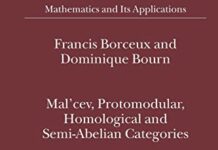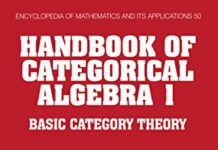
Ebook Info
- Published: 2014
- Number of pages: 447 pages
- Format: PDF
- File Size: 8.28 MB
- Authors: Francis Borceux
Description
This is a unified treatment of the various algebraic approaches to geometric spaces. The study of algebraic curves in the complex projective plane is the natural link between linear geometry at an undergraduate level and algebraic geometry at a graduate level, and it is also an important topic in geometric applications, such as cryptography.380 years ago, the work of Fermat and Descartes led us to study geometric problems using coordinates and equations. Today, this is the most popular way of handling geometrical problems. Linear algebra provides an efficient tool for studying all the first degree (lines, planes) and second degree (ellipses, hyperboloids) geometric figures, in the affine, the Euclidean, the Hermitian and the projective contexts. But recent applications of mathematics, like cryptography, need these notions not only in real or complex cases, but also in more general settings, like in spaces constructed on finite fields. And of course, why not also turn our attention to geometric figures of higher degrees? Besides all the linear aspects of geometry in their most general setting, this book also describes useful algebraic tools for studying curves of arbitrary degree and investigates results as advanced as the Bezout theorem, the Cramer paradox, topological group of a cubic, rational curves etc.Hence the book is of interest for all those who have to teach or study linear geometry: affine, Euclidean, Hermitian, projective; it is also of great interest to those who do not want to restrict themselves to the undergraduate level of geometric figures of degree one or two.
User’s Reviews
Editorial Reviews: Review From the book reviews:“The book under review is the second of a trilogy of books discussing the broad sweep of geometry and the various ways of approaching this subject. … This book … would give the students not only a new look at geometry but also a renewed appreciation for the power of linear algebra in other branches of mathematics. … it is certainly something that any instructor interested in geometry or algebra would want to have.” (Mark Hunacek, MAA Reviews, January, 2014)“This beautiful, comprehensive, well-written and clearly structured book addresses all those who have to teach or learn geometry at an undergraduate level. More than 110 very aesthetical figures accompany the text and appeal to the geometric intuition of the reader; 41 references are recommended for further reading. The text is divided into 7 chapters, each begins with an overview and ends with problems and exercises.” (Rolf Riesinger, zbMATH, Vol. 1298, 2014) From the Back Cover This is a unified treatment of the various algebraic approaches to geometric spaces. The study of algebraic curves in the complex projective plane is the natural link between linear geometry at an undergraduate level and algebraic geometry at a graduate level, and it is also an important topic in geometric applications, such as cryptography. 380 years ago, the work of Fermat and Descartes led us to study geometric problems using coordinates and equations. Today, this is the most popular way of handling geometrical problems. Linear algebra provides an efficient tool for studying all the first degree (lines, planes, …) and second degree (ellipses, hyperboloids, …) geometric figures, in the affine, the Euclidean, the Hermitian and the projective contexts. But recent applications of mathematics, like cryptography, need these notions not only in real or complex cases, but also in more general settings, like in spaces constructed on finite fields. And of course, why not also turn our attention to geometric figures of higher degrees? Besides all the linear aspects of geometry in their most general setting, this book also describes useful algebraic tools for studying curves of arbitrary degree and investigates results as advanced as the Bezout theorem, the Cramer paradox, topological group of a cubic, rational curves etc. Hence the book is of interest for all those who have to teach or study linear geometry: affine, Euclidean, Hermitian, projective; it is also of great interest to those who do not want to restrict themselves to the undergraduate level of geometric figures of degree one or two. About the Author Francis Borceux is Professor of mathematics at the University of Louvain since many years. He has developed research in algebra and essentially taught geometry, number theory and algebra courses and he has been dean of the Faculty of Sciences of his University and chairman of the Mathematical Committee of the Belgian National Scientific Research Foundation. Read more
Reviews from Amazon users which were colected at the time this book was published on the website:
⭐
⭐
⭐
Keywords
Free Download An Algebraic Approach to Geometry: Geometric Trilogy II 2014th Edition in PDF format
An Algebraic Approach to Geometry: Geometric Trilogy II 2014th Edition PDF Free Download
Download An Algebraic Approach to Geometry: Geometric Trilogy II 2014th Edition 2014 PDF Free
An Algebraic Approach to Geometry: Geometric Trilogy II 2014th Edition 2014 PDF Free Download
Download An Algebraic Approach to Geometry: Geometric Trilogy II 2014th Edition PDF
Free Download Ebook An Algebraic Approach to Geometry: Geometric Trilogy II 2014th Edition



